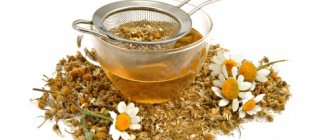- July 22, 2018
- Gastroenterology
- Alexander Grabovoi
The healing properties of celery have been known for a long time. Moreover, not only the roots, but also the above-ground part of the plant are useful. Many housewives use the plant for dressings and salads. Thanks to its constituent components, it has a positive effect on the human body.
Celery is especially recommended for those who are watching their figure, as it allows them to cope with excess weight. But is it possible to eat celery with gastritis, and will it benefit or harm the body? It is worth listening to the recommendations of experts.
Not recommended. Why?
Doctors agreed that you should not eat celery if you have gastritis with high stomach acidity.
Among the reasons for the ban, it is worth highlighting that when celery enters the intestines, it causes discomfort in the patient.
If a person has gastritis with low acidity, in this case the answer can be positive. You can eat celery for gastritis with low acidity. But it is worth noting that its use is permissible in small quantities at the time of remission. Is it possible to eat celery with gastritis at the time of its exacerbation? No. Vegetables must be excluded from the diet completely.
Celery in folk medicine
Celery belongs to the umbelliferous family, along with carrots, parsley and dill. Celery is descended from wild celery, native to the Mediterranean region, where its seeds were once highly valued as a medicine. As is the case with many other folk remedies, modern research confirms the medicinal value of this widespread vegetable crop.
In modern folk medicine, celery is used as a strong diuretic for urinary tract diseases. It is also prescribed as an appetite enhancer.
The juice of the fresh roots of the plant is used for kidney diseases, gout, rheumatism, neurasthenia, urticaria, and skin inflammation.
Targeted nutrition tips
that will increase your energy level by 10 out of 10
From TOP nutritionists of the MIIN
Get tips
Celery fruits are brewed as tea and drunk for shortness of breath, hiccups, and as an antiemetic. It is considered a good remedy for senile constipation.
The fruits of the plant are used for asthma, diabetes, and obesity.
In Bulgarian folk medicine, celery root is used as an analgesic, diuretic, and appetite stimulant for kidney diseases, prostatitis, and impotence. The juice of the plant is prescribed 1 teaspoon 2-3 times a day.
In Ayurveda medicine, celery seeds are classified as special Ayurvedic remedies. They are believed to have diaphoretic, expectorant, and diuretic properties. The seeds are prescribed for colds, bronchitis, weak digestion, and swelling. For sinusitis, 1-3 grams are prescribed. seed powder, three times a day.
In folk medicine of other countries, celery fruits, its herbs and roots are used in the treatment of urolithiasis, neuroses, and insomnia. An ointment of its roots with butter is used in the treatment of wounds as an anti-inflammatory agent.
Celery essential oil has a detrimental effect on pathogenic fungi Candida albicans, Candida tropicalis, Candida krusei, Candida guilliermondii, Candida parapsilosis, Cryptococcus neoformans, Trichophyton rubrum, Trichophyton mentagrophytes, T. Mentagrophytes var. interdigitale, Trichophyton verrucosum, Microsporum canis, Microsporum gypseum, Epidermophyton floccosum, Aspergillus niger, Aspergillus fumigatus and flavus Aspergillus.
Due to its estrogenic properties, celery extracts are effective in the treatment of primary dysmenorrhea.
Celery herb extracts, thanks to apigenin, have a vasodilatory, hypotensive effect.
The mucus from the roots of the plant has an enveloping effect. Celery flavonoids strengthen the walls of blood vessels, and therefore it is prescribed for various diseases of the capillaries.
Alcohol extracts of celery seeds have a pronounced anti-Helicobacter effect. A study by Iranian doctors showed that taking a mixture consisting of Apium graveolens and Trachyspermum copticom is more effective than the drug omeprazole in the treatment of functional dyspepsia.
Celery herb extracts have anti-inflammatory, anti-arthritic effects.
Celery grass and seeds have a pronounced hypoglycemic effect.
Experimental studies have shown that taking celery seed extract reduces total cholesterol, triglycerides, low-density lipoproteins and increases high-density lipoproteins.
Positive results have been obtained in the treatment of rheumatism and prostatitis with celery. Research has shown that celery extracts prevent the development of cognitive decline associated with depression with age.
We recommend
“Blood thinning products: diet, menu” Read more
3-N-butylphthalide, isolated from celery seeds, has a pronounced neuroprotective effect, prevents damage to nerve cells during ischemia and exposure to chemical agents.
Experimental studies showed that celery seed L-3-n-butylphthalide restored synaptic connectivity (a cause of cognitive impairment) impaired in a model of Alzheimer's disease. Celery Dl-3nbutylphthalide prevents the development of cognitive impairment in chronic conditions of hypoxia/hypercapnia in patients with chronic obstructive pulmonary diseases.
Experimental studies on animals have shown that taking aqueous extracts of celery leaves increases the rate of spermatogenesis and sperm quality.
Study
: Effective remedy - celery
Benefits for immunity
There is nothing better than celery for reduced protective functions of the body. The product will perfectly strengthen the immune system and allow it to resist various infections and diseases. The components in celery help the body cope with malignant tumors.
Excessive production of gastric juice from the coarse fiber contained in the vegetable increases the acidity level of the stomach. Therefore, people with elevated levels are strictly prohibited from consuming celery. But during the period of remission it can be eaten only if properly prepared.
Recipes with celery
Celery, cucumber and mint juice recipe
Ingredients
:
- medium celery stalk;
- cucumber - 1 pc.;
- mint - 1 sprig.
Preparation
:
Cut the celery into cubes and place in a blender bowl. Peel the cucumber and cut into cubes, add to the celery. Grind the vegetables into a homogeneous mass and squeeze out the juice through cheesecloth.
Serve the drink garnished with a sprig of mint and 3-4 ice cubes.
French pumpkin casserole with celery
Ingredients
:
- Celery – 3 stalks.
- Pumpkin –800 gr.
- Bell pepper – 250 gr.
- Carrots – 150 gr.
- Onions –80 gr.
- Low-fat cheese – 200 gr.
- Sour cream (not more than 10%) –50 gr.
- Soy sauce – 60 ml (3 tablespoons).
We recommend
“Therapeutic diets: principles of construction and examples of tables” Read more
Preparation
:
- Rinse the carrots under running water and remove the peel.
- Cut the peeled carrots into strips, cubes or grate on a coarse grater.
- Wash the celery and cut into medium-sized rings.
- Peel the pumpkin and cut into small cubes.
- Wash the bell pepper, remove the stem, core and seeds. Cut into slices Sliced carrots and celery, simmer over low heat in a minimum volume of water for 10 minutes. Vegetables must be mixed.
- Then add pepper and pumpkin.
- Season with sour cream and soy sauce.
- Place the resulting mixture in a baking dish and sprinkle with grated cheese.
- Place in the oven preheated at 180 degrees for 30 minutes.
Classic American appetizer celery dip
Ingredients
:
- Celery
For the sauce - dip:
- 150 ml sour cream or Greek yogurt.
- 1 clove of garlic, finely chopped or pressed.
- 1 tbsp. lemon juice or balsamic vinegar).
- Salt.
- Black pepper.
- 100 grams of low-fat cheese (grate).
- 1 tbsp. chopped fresh parsley.
- The cheese can be replaced with half an onion (finely chopped).
Quinoa and celery salad
Ingredients
:
- 1 cup quinoa;
- 3 small stalks of celery;
- 3 oranges;
- 1 tbsp olive oil;
- 1/3 cup walnuts;
- 1/4 cup pomegranate seeds;
- salt and pepper to taste.
Instructions
:
- Boil the quinoa. Chop celery, 2 oranges, chop nuts.
- Mix the juice of 1 orange and olive oil in a separate bowl.
- Add rice, oranges and celery to a large bowl. Pour over the above-prepared sauce, add salt and pepper. Sprinkle with pomegranate and nuts.
We recommend
“Vitamins for veins and blood vessels: nutritional rules for maintaining health” Read more
Apple and celery soup
Ingredients
:
- 1 large peeled and chopped celery root;
- 1 medium onion;
- 2 tablespoons oil;
- 1 large peeled and chopped apple;
- 4 glasses of water;
- 1 vegetable bouillon cube;
- salt and pepper to taste;
- chopped nutmeg.
Instructions
:
- Heat oil in a large saucepan.
- Add onion and salt and cook until golden brown.
- Add water and vegetable stock cube.
- Add the apple and wait until it boils.
- After boiling, lower the temperature.
- Cover and cook until the celery is tender (about 15 minutes).
- When the celery softens, puree the soup (you can use a blender).
- Add chopped nutmeg.
Salmon baked with celery and tomatoes
Ingredients
:
- 1 salmon fillet with skin.
- 5 cherry tomatoes.
- 2 small celery sticks.
- 1/6 white onion.
- 2 tbsp. l. capers.
- 1/2 tsp. lime juice (can be replaced with lemon).
- 1 tbsp. l. pickled ginger.
- Olive oil.
- Salt and black pepper to taste.
We recommend
“Correct carbohydrates for women: list of products, daily intake for weight loss” Read more
Cooking method
:
Preheat the oven to 205° C. Wash the fish and treat with salt and pepper.
Cut the vegetables: celery and onion into strips, tomatoes into two parts. Grease the foil with olive oil and place it in a glass dish where the fish will be baked.
Mix vegetables with capers and ginger. Place the fish in foil and add lime juice (can be replaced with lemon). Place the vegetable mixture on top of the fish. Cover the foil on both sides. Place in the oven for 20 minutes. Ready!
Mackerel salad with celery and onion
Ingredients
:
- 3/4 cup cooked Atlantic mackerel.
- 1/4 cup finely chopped celery.
- 1/8 cup finely chopped red onion.
- 1/8 cup finely chopped parsley.
- 1/2 tbsp. l. ground flax seeds.
- 3 tbsp. l. olive oil.
- Juice of half a lemon.
- Sea salt and pepper to taste.
Cooking method
:
In a small bowl, use a fork to shred the mackerel into pieces. Add celery, onion and parsley and stir. In a separate bowl, mix olive oil with flax seeds. Without ceasing to stir, combine the fish and sauce and mix thoroughly.
Serve on lettuce leaves, drizzled with olive oil. Sprinkle with lemon juice, salt and pepper to taste.
Ready! Bon appetit!
A stable presence of celery in the diet is an excellent way to prevent atherosclerosis, diabetes, cardiovascular diseases and impaired water-salt metabolism. But before introducing celery into your regular diet, make sure that you do not have any of the contraindications discussed in the article.
Not recommended
- Eating vegetables raw.
- You should not drink freshly squeezed juice from the stems or roots.
- Seeds containing many different essential oils will also have a negative effect on the body.
- During the period of exacerbation of gastritis, celery is excluded from the diet.
- You can enrich the body with useful components by consuming decoctions from the root.
- You can add fresh stems, finely chopped, for soup or other first courses.
- The vegetable can be added dried to various dishes.
- The ideal option would be to prepare a creamy soup or creamy vegetable puree with the addition of a small amount of root vegetables.
What are the benefits of celery?
Celery has a wide range of beneficial effects on the body.
It contains a plant compound called apigenin, which plays a role in traditional Chinese medicine as an anti-inflammatory, antibacterial, antiviral and antioxidant agent.
It may also have properties that help fight cancer. According to the authors of the 2016 review, laboratory tests have shown that apigenin may promote apoptosis, a type of programmed cell death, which could make it useful as a cancer treatment.
Study
: Apigenin in cancer therapy: anti-cancer effects and mechanisms of action
In 2015, the researchers behind a mouse study concluded that diets rich in apigenin and apigenin reduce the expression of certain inflammatory proteins. Thus, these substances can reduce inflammation and restore the balance of the immune system.
Celery contains a flavonoid called luteolin. The authors of a paper published in 2009 suggested that luteolin may have anti-cancer properties—it could help prevent cancer cells from spreading and causing cell death. They suggested that luteolin may make cancer cells more susceptible to attack by chemicals in treatment.
We recommend
“The benefits of chicken liver: consumption rates, recipes” Read more
Effect of Celery on Bone Health
Celery is an abundant source of vitamin K, with one cup of raw celery providing you with 64 micrograms (mcg) of this nutrient.
A 2022 review of five studies that included a total of 80,982 participants looked at the link between vitamin K and bone fractures. Participants with higher dietary intakes of vitamin K had a lower risk of fractures.
Specifically, the authors noted that the risk of fracture was 22% lower among those who consumed more vitamin K than among those who consumed less.
Study
: Vitamin K intake and the risk of fractures
Effect of celery on diabetes
Millions of people around the world have type 2 diabetes, a condition that impairs the body's ability to control blood glucose levels. Eating a healthy diet can reduce your risk of developing type 2 diabetes.
In a 2012 study using data from 16,154 people, researchers examined the association between consumption of fruits and vegetables, including root vegetables, and the risk of developing type 2 diabetes.
They found that people who ate more root vegetables had a 13% lower risk of diabetes than those who ate fewer of them.
Study
: Fruit and vegetable intake and type 2 diabetes: EPIC-InterAct prospective study and meta-analysis
However, a more recent study conducted in 2019 examined the vegetable intake of 424 children and adolescents. The study authors found that eating root vegetables did not affect the likelihood of developing metabolic syndrome.
Study
: Prospective study of total and various types of vegetables and the risk of metabolic syndrome among children and adolescents
More research is needed to confirm the protective benefits of root vegetables such as celery against diabetes.
Effects of Celery on Heart Health
In one 2015 study of 2,884 adults, researchers examined the link between ascorbic acid levels in the blood and a person's risk of high blood pressure.
They found that participants with higher levels of ascorbic acid in their blood had a lower risk of developing high blood pressure.
Study
: Plasma Ascorbic Acid, A Priori Diet Quality Score, and Incident Hypertension: A Prospective Cohort Study,
Consuming foods high in vitamin C, such as celery, can help a person reduce the risk of high blood pressure by increasing ascorbic acid levels. Recall that high blood pressure is a leading cause of stroke and cardiovascular disease.
The effect of celery on the treatment of gastrointestinal diseases
Celery is actively used when it is necessary to stabilize the condition of diseases of the gastrointestinal tract: it normalizes digestion, stimulates the production of gastric juice, improves appetite and removes toxic substances.
It is rich in fiber, which improves intestinal microflora and removes waste and toxins from the body. Due to this, it has a mild laxative effect
Since it has an anti-inflammatory effect, it is used to relieve pain and exacerbations during ulcers and gastritis. This property is also useful in treating inflammation in other body systems, for example, cystitis, problems with the kidneys, gall bladder and liver.
This quality is especially characteristic of celery seeds. Their extract is used as an antispasmodic and analgesic. Due to the fact that celery reduces joint pain, it is recommended for people with arthritis, arthrosis and rheumatism.
The effect of celery on immunity
The alkaline environment of the body is the key to strong immunity, because as studies show, bacteria, viruses and parasites do not survive in an alkaline environment.
Like all vegetables, celery has an alkalizing effect on the body. This applies to raw vegetables, so for the alkalizing effect it is better to eat celery raw.
Celery is also rich in ascorbic acid, which helps improve immunity.
Many women love celery, as it is low in calories and gives a feeling of fullness due to the large amount of fiber. For the same reason, celery is included in weight loss diets.
But this is not the only beneficial property of the product for the female body. Thus, celery contains apiol.
The effect of celery on the female body
This substance acts as estrogen, a female hormone. Therefore, consuming celery in a woman’s diet helps fight painful and irregular periods, as well as unpleasant premenstrual symptoms.
Celery also improves the condition of a woman before menopause, since the plant contains phosphorus and vitamin K. These two elements are useful for women during this period, as they strengthen bones. Eating celery will help prevent the development of osteoporosis.
Another property highly valued among women is that celery will help maintain youth. It is rich in antioxidants that fight aging and have anti-inflammatory effects. Celery also has a beneficial effect on hair, nails and skin.
The effect of celery on the male body
Celery contains androsterone, a plant analogue of male sex hormones, which ensures stable erectile function and increases libido.
Thus, the main benefits of celery for men
:
- Due to the high content of androsterone in the stem and rhizome, the production of the male hormone testosterone is activated, which ensures full sexual function;
- Vegetable crops contain substances that are similar in structure to pheromones. They act as aphrodisiacs, enhancing sexuality and attracting the opposite sex;
- The antibacterial and antiseptic effects of celery are used to combat infectious lesions of internal organs, help cope with prostatitis and other genitourinary diseases;
- Thanks to its diuretic effect, the product removes harmful substances, toxins and radionuclides, has an antioxidant effect and serves as a prevention of cancer;
- The components of the plant activate blood flow, ensuring optimal blood supply to the genitals and stable erection.
The effect of celery on the children's body
Children's doctors recommend introducing a child to celery no earlier than one and a half years of age.
First of all, you need to check the body's reaction to celery, whether a small piece will cause an allergic reaction. Therefore, celery should be introduced into complementary foods gradually, mixing a small amount with other usual foods.
We recommend
“Intestinal motility: nutritional rules for improvement, menu for the week” Read more
What are the benefits of celery for a growing body?
- The calcium in the composition will strengthen the baby's bones and teeth.
- Potassium has a beneficial effect on the cardiovascular system of a growing organism.
- Sodium will make up for the lack of salt.
- Phosphorus will help develop the child's mental abilities.
How to learn to choose celery
Celery can be found commercially in the form of roots and fresh leaves. To purchase a quality product, it is important to know the rules of selection. Firstly, there are many varieties that are difficult to distinguish by appearance.
- The fresh color of the plant has a rich hue.
- By touching the leaf, you can feel its elasticity. The larger and denser the stems, the juicier they are.
- It is worth paying attention to the characteristic shine. The stems emit a pleasant aroma. But the strong shine indicates that during its storage, special compounds were used to give the vegetable a marketable appearance. It is better to avoid such a product.
- Leaves should not be dirty or stained. Otherwise, this indicates damage to the plant.
- When you try to separate the stems, you will hear a crunching sound, which is normal.
- When buying a root, it is better to give preference to a smaller specimen, since large root vegetables may have a weakly expressed taste. In addition, they are distinguished by their rigidity.
- The young vegetable has tender and juicy pulp. The old one is fibrous and darker in color.
- Look carefully at the bunch. If there are torn parts on it, this may indicate that the seller removed dried or damaged sheets.
- It is recommended to smell the bunch. If there is no smell, it means that it was grown in conditions where chemicals were actively used. It is advisable to give preference to celery with a light aroma.
Vitamin and mineral composition of celery, nutritional and energy value
Celery
- an ideal dietary food product with low calorie content: only 42 kcal per 100 g for the root and 13-16 kcal for the leaves and stems. Low in fat and carbohydrates, it is an excellent source of fiber and provides low-calorie fiber.
Energy value of celery
:
- proteins - 0.9 g;
- fats - 0.1 g;
- carbohydrates - 2.1 g.
Due to its low calorie content, the plant is recommended for those who want to lose weight.
:
- raw vegetable contains 13 kcal per 100 g;
- fried or boiled - 25-26 kcal;
- steamed - 9-10 kcal;
- celery root - 32 kcal.
Celery is one of the natural antioxidants. It is a source of useful microelements, vitamins and minerals. Among them
:
- iron - 1.3 mg;
- calcium - 72 mg;
- magnesium - 50 mg;
- potassium - 430 mg;
- fiber - 1.8 g;
- phosphorus - 77 mg;
- sodium - 200 mg.
Vitamin composition of vegetables
:
- B1 (0.02 mg), B2 (0.1 mg), B6 (0.08 mg), B9 (21 mcg) normalize the functioning of the nervous system.
- C (38 mg) strengthens the immune system.
- PP (0.5 mg) supports the functioning of the heart and blood vessels.
- E (0.5 mg) and A (750 mcg) improve the condition of the skin, nails and hair.
The leaves of the plant contain the most carotene and vitamin E, so they are a real boon for women who care about their vision, nails, skin and hair.
Celery also contains various acids and antioxidants.
In addition to apigenin and luteolin, celery contains other plant compounds that have powerful antioxidant properties.
These include
:
- selinene;
- limonene;
- kaemferol;
- p-coumaric acid.
Antioxidants help neutralize free radicals and prevent them from causing damage that could otherwise lead to disease.
- organic acids;
- oxalic acid;
- flavonoids;
- furanocoumarins.
Important nuances
Those suffering from gastritis try to increase the body's defenses, get rid of toxins formed during inflammatory processes in the gastric mucosa, and improve intestinal function. By correctly following the recommendations of a medical specialist, you can significantly improve your health.
- In each individual case, the diet for the disease is individual. Therefore, the patient has his own list of foods that are acceptable for consumption. This rule also applies to celery.
- With gastritis, it is important to prevent the formation of aggressive microflora in the stomach, which negatively affects the integrity of the walls of the organ. Therefore, it is important to be careful when including celery in the diet for gastritis.
- Women who are in an interesting situation, as well as nursing mothers, should not include the product in the menu. This condition is a contraindication to eating vegetables. In any case, before consuming celery, it is recommended to consult a gastroenterologist.
Always remember that self-medication for such a dangerous disease is fraught with consequences. Don't forget to consult a specialist.
Celery in dietetics
Dishes with celery are perfectly digestible and stimulate metabolism, as it can get rid of excess cholesterol, lower blood sugar, remove excess fluid, it helps get rid of congestion, remove swelling, normalize blood pressure, and stabilize hemoglobin.
Celery is commonly promoted as a negative calorie food because it has high water and fiber content.
According to the Academy of Nutrition and Dietetics, the human body burns about 10% of its daily calories through thermogenesis, which involves chewing and digesting food and storing its nutrients.
In theory, negative calorie foods are foods for which more energy is expended in their digestion and assimilation than is consumed, resulting in an energy deficiency. Typically, negative calorie foods are those that are high in water and fiber and low in fat.
However, a 2022 study, which has not yet been peer-reviewed, concluded that celery is not a negative calorie food.
Lizards that ate celery used 33% of the food's calories for digestion, while 43% of the calories were lost through feces and urine. The lizards absorbed about 24% of their calories from the celery they ate.
Study
: Negative calorie foods: An empirical examination of what is fact or fiction | bioRxiv
Broccoli soup
For preparation you will need the following ingredients:
- 1 liter of water.
- 400 g broccoli.
- 30 g olive oil.
- Medium-sized potato root crop.
- A little celery.
All components should be placed in water. Broccoli can be chopped. The products are cooked until fully cooked. At the next stage, it is important to use a blender, in which you should beat the mass to a homogeneous mushy consistency. If desired, you can add greens (parsley or dill) and a little low-fat sour cream to the plate. Pre-prepared crackers are also suitable. Cut white bread into small cubes and dry in the oven.
The opinion that nutrition during illness is monotonous is wrong. In fact, even with a small amount of ingredients you can prepare a healthy and, most importantly, tasty dish. Most often, the ideal option for preparing dishes is cereals - rice, millet or buckwheat, as well as vegetables or lean meat. Greens, salt, sugar and milk are allowed in small quantities. During an exacerbation, it is better to avoid salt.
Varieties of celery. Which is healthier: root, stem, leaves?
Celery has an unusual taste and unlike other vegetables - bitter-sweet, spicy and strong aroma.
Root celery is primarily grown to produce a fleshy, round root vegetable that is shaped like a large apple.
But its leafy part is also suitable for eating. The aroma of the white pulp of the root vegetable is slightly reminiscent of parsley. The root part of the plant, in addition to its vitamin composition and essential oil, contains enzymes that prevent the development of cancer cells.
Both the roots and leaves of this vegetable contain a large amount of valuable amino acids, such as
:
- Valin.
- Isoleucine (controls hemoglobin levels, supports the heart and sufficient blood sugar).
- Tryptophan (restores normal levels of the hormone of joy).
- Aspartic acid (necessary for the functioning of the neuroendocrine system).
- Rubidium (163% DV). This little-known element acts as an antihistamine and fights allergens, relieves inflammation and nervous tension.
You can eat the root vegetable either raw or prepare various culinary delights with its addition: salads, first and meat courses, as well as delicious and healthy cutlets, the basis of which will be celery.
The petiole variety is also called salad. The variety differs from others in its thicker and fleshier stems, the thickness of which reaches 4 cm, as well as the absence of root crops.
For eating the leaves of the plant, a variety called leafy is suitable. Visually, the leaves of this variety resemble parsley leaves, but the celery greens are much more lush, and the aroma is more refined and spicy.
The leafy part can be used salted, fresh, or dried. Spicy greens will add a special tart flavor and exquisite aroma to all kinds of vegetable dishes.
Modern research on celery has shown that all parts, especially the roots, have a diuretic effect.
Study
: Role of Zinc Homeostasis in the Pathogenesis of Diabetes and Obesity
All parts of the plant have pronounced antioxidant properties. Celery seeds have antihypertensive properties.
Study
: Antiulcerogenic and antibacterial activities of Apium graveolens essential oil and extract, Antihypertensive effect of celery seed on rat blood pressure in chronic administration
The uniqueness of celery is that all parts of this vegetable are suitable for food - leaves, roots and stems. By including it in your diet, you can not only benefit your body, but also lose a few extra pounds. The main thing is to observe moderation in consumption and follow the recommendations of specialists. So how much celery can you eat per day to get the most benefits?
Use in cooking
Celery has many health benefits and is also quite tasty.
It has a strong aroma, so it is not recommended to add it to dishes in large quantities. Otherwise, celery will “overwhelm” other odors.
Greens and petioles are a spice. And that’s why they are usually added almost at the end of cooking (ten minutes). The stems are cut coarsely, and the leaves are formed into a small bunch.
Celery is added to many dishes as a seasoning:
- Roots, stems and leaves are suitable for stews and salads.
- Puree soups using root vegetables.
- Pairs perfectly with apples, cucumbers, and cabbage.
- The crushed root is often added to mashed potatoes (it adds a piquant aroma and taste).
- Side dish for beans, potatoes, chicken, carrots, beef, chicken.
- Pairs with ribs (pork), omelettes, vegetable soups, marinades, broths (chicken, meat).
- As a result of combining chopped celery with carrots, pepper (necessarily sweet), parsley and salt, a universal seasoning is obtained.
- Frozen vegetables are used to make soup, sauce, filling, and so on.
Mechanism of action
Celery helps speed up metabolism and burn fat. It takes more energy to digest it than it contains. And the high content of fiber, which is not digested but simply fills the stomach, ensures long-term satiety. Individual parts of the plant have different effects on the body. It is recommended to eat everything - roots, leaves, stems and juice of celery.
Juice
The juice nourishes and cleanses the body and produces a tonic effect. Drinks made from celery juice and other healthy ingredients can replace desserts and satisfy the need for sweets. The juice is a strong diuretic. It removes excess fluid and salts from the body.
Leaves
The leaves contain a high concentration of vitamin C. They should be used to stimulate metabolism, maintain tone, and maintain nutritional balance during diets. It stimulates intestinal motility, removes toxins, and normalizes kidney function.
Root
The root is the most useful part of celery. It has a beneficial effect on the gastrointestinal tract, accelerates metabolism, restores water balance, and provides the body with vitamins.
Stem
The stems promote fat burning. In addition, they have a beneficial effect on libido, which indirectly helps to get rid of extra pounds.
Celery during pregnancy
No matter what beneficial properties celery has, its use is contraindicated for pregnant women. The fact is that this vegetable contains substances that can cause miscarriage or early labor due to active blood flow to the uterine muscles. That is why doctors prohibit the use of this product during pregnancy.
Celery also provokes the formation of gases, which worsen a woman’s well-being. The oils contained in the composition often provoke allergies in the expectant mother.
What happens if you eat celery every day?
Celery is recommended to be consumed daily. All of the above effects are achieved only with long-term daily consumption. Over time, the functioning of the digestive organs and genitourinary system will return to normal, and the metabolic process will stabilize. But provided that the rest of the foods in the diet are as healthy as possible, and junk food is excluded from it.
To enhance the effects of celery, you need to eat it regularly. But you cannot increase portions beyond the norm. This can lead to various health problems. Most often, excessive consumption of celery leads to diarrhea and disruption of water balance.
Consumption rate
The maximum daily norm is 200 g. It is enough to eat 150 g of vegetable in any form, regardless of what part of it is used. You can drink 100-200 g of juice per day. Or divide this portion into several cocktails, including extracts from other plants. The stems, leaves and roots are used to make purees or combined with other products to make all kinds of soups, salads, and stews.











